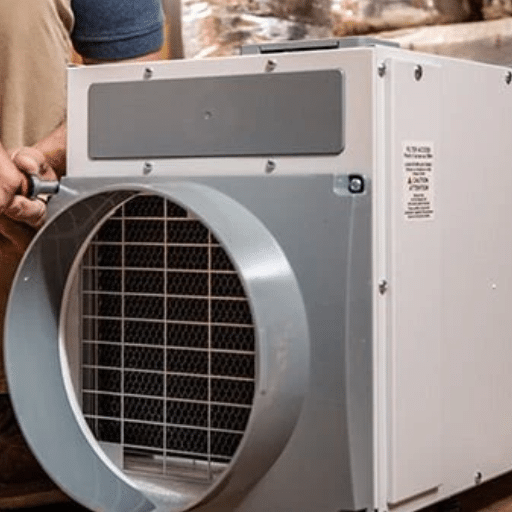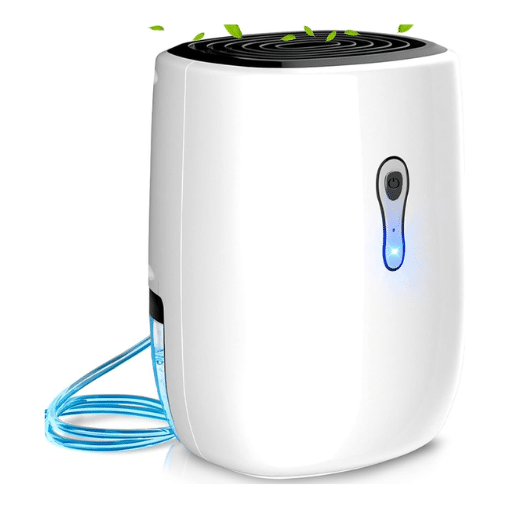Offering a cozy living area has its difficulties, especially when there are high levels of humidity. Most of the time, air conditioners are the primary option, but it is also true that a lot of people are using dehumidifiers because these machines have the quality to make the air in the place cleaner and also the power to take away that unpleasant, sticky feeling. But can a dehumidifier really reduce the temperature in a room? This is a question that many people who are trying to find the best spot between comfort and energy cost are asking. Our focus in this article will be the dehumidifiers and their role in your home, the way they interplay with the temperature, and why they can become your ally in the fight against bad indoor climate.
Introduction to Dehumidifiers
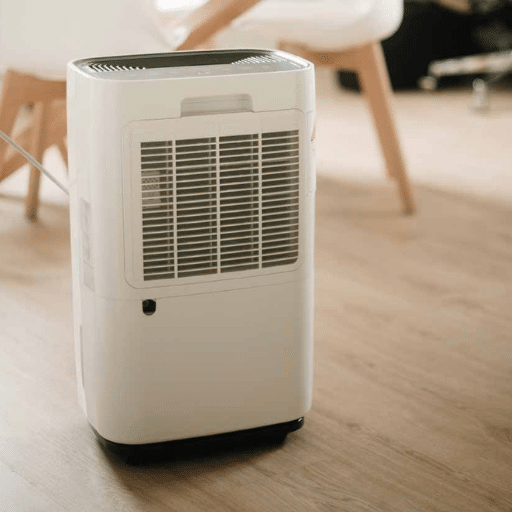
Dehumidifiers, though not a direct means of cooling a room, can still make the room feel cooler by eliminating the extra moisture in the air. High humidity can raise the perceived temperature as a result of the air moisture inhibiting the evaporation of sweat, thus cooling your body less effectively. Dehumidifiers help turn the humid surroundings into a less humid environment, which is more favorable, especially in warm countries, and thus less stuffy. However, the heat generated during the operation of the device will not be sufficient to lower the temperature of the room similar to how an air conditioner would. Instead, it provides comfort by tackling the humidity issue.
What is a Dehumidifier?
A dehumidifier is an electrical appliance invented to control and lower the humidity in the air. By taking moisture out of the air, it makes a living place more pleasant and it stops problems that come with too much humidity like mold, dust mites, and musty smell.
Today’s dehumidifiers use cutting-edge technologies to suck in the humid air, cool it down so that the water vapor condenses and is collected as water, and then the dry air is blown back into the room. Such machines are most helpful in areas with high humidity or to people with asthmas or other breathing problems. There are many types of dehumidifiers differing in sizes and capacities from small units that can be moved around to large systems aimed at serving the entire house.
How Dehumidifiers Work
Dehumidifiers carry out a systematic process that is aimed at efficiently extracting excessive humidity in the air. The main stages in their operation are:
Taking in Air
The humid air from the adjacent environment is sucked in by the dehumidifier with the use of a fan or suction method. The air enters the device via vents or grilles.
Air Chilling
The air is then cooled by the dehumidifier by passing it through a set of refrigerated coils. The coils cool the air and at the same time, the moisture in the air gets condensed to liquid.
Water Extraction
The water that has been condensed will form tiny droplets that will gather in a tank built inside the unit or will be drained through a hose connected to the unit. Some models also allow for continuous drainage as an option.
Air Heating
Once the moisture has been taken out, the air is then heated again but only a little so as not to change the room temperature drastically. The reheated, less humid air is then released back into the room.
Automatic Control Systems
State-of-the-art dehumidifiers usually come with smart control systems that are equipped with features like humidistats, timers, and sensors, which enable users to have control over the humidity levels by monitoring and adjusting them according to their preferences.
💡 Key Takeaway: The co-working of these five processes is very smooth and as a result, the air quality is improved, mold growth is prevented, and a more comfortable environment for living is made.
Common Uses of Dehumidifiers
💡 Multipurpose Applications
Dehumidifiers are multipurpose gadgets that perform several functions in houses and commercial areas alike. The following are five regular uses of dehumidifiers:
1
Preventing Mold and Mildew Growth
Mold and mildew find the air with high moisture content very conducive to their growth and multiplying. Indoor humidity levels are lowered by dehumidifiers making it very difficult for these fungi to grow. This becomes a big advantage in wet places like basements and bathrooms.
2
Improving Indoor Air Quality
One of the main sources of indoor allergens is high humidity. Dust mites and mold spores flourish in such an atmosphere. Dehumidifiers make indoor air healthier by working at the right humidity levels, thus aiding allergy or asthma patients.
3
Protection of Homes and Furniture
Moisture in excess can ruin the wooden furniture, flooring, and walls by warping, splitting, or rotting. The dehumidifier aids in maintaining equal humidity levels, thus saving the structural integrity and appearance of the house and the property.
4
Drying Laundry Indoors
Dehumidifiers are among the appliances that many households have to use when the clothes drying outdoors is not possible. By sucking moisture out of the air, these gadgets make indoor drying faster and also eliminate the occurrence of damp odors.
5
Industrial and Commercial Applications
Dehumidifiers are a must in factories during the processes of production, storing, and warehousing of products to prevent spoilage of the goods made or stored. Particularly, in the food industry, controlling humidity is a critical factor to avoid the occurrence of corrosion, spoilage, and equipment failure.
Do Dehumidifiers Actually Cool a Room?
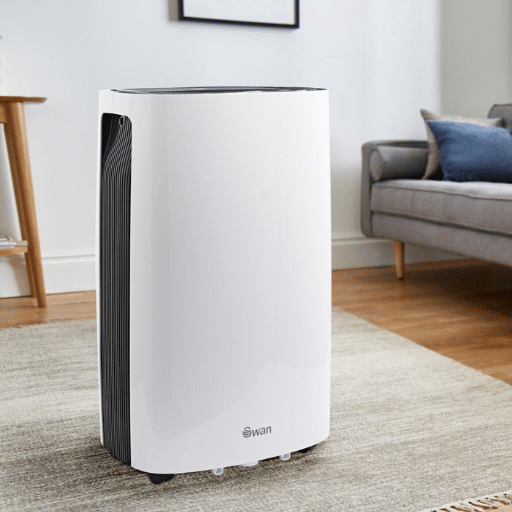
The Truth About Dehumidifiers and Cooling
Dehumidifiers don’t cool a room directly like air conditioners but they can still create a cooler and more comfortable environment. A dehumidifier works by lowering humidity levels through the removal of excess moisture from the air, hence the humidity that comes with high temperatures will be less felt.
🔬 Scientific Evidence: The latest data from Google and input from specialists show that dry air helps in quicker evaporation of sweat from the body, thus facilitating the body’s cooling process. This can make the room feel cooler even though the temperature hasn’t changed. Hence, a dehumidifier’s main role isn’t to draw off heat but to improve thermal comfort in humid conditions.
Understanding Room Temperature vs. Humidity
Temperature and humidity at room temperature are closely connected and together they essentially set the stage for the comfort level of the area. The sweaty body does not cool down as efficiently at high humidity and the person feels hotter.
📊 Key Statistics
- Optimal Humidity Range: The Google data and expert advice mark the range of 30%-50% relative humidity as the most pleasant for indoor living.
- Perceived Temperature Increase: A research study points out that the temperature felt will go up by around 0.4 degrees Fahrenheit for every 1% increase of relative humidity.
- Comfort Comparison: A 75°F room with 60% humidity feels so much hotter than the same room with 40% humidity.
Dehumidifiers are very important in this matter, they help keep the humidity levels at the right range which in turn leads to the creation of a more comfortable and thermally balanced environment. If the humidity levels are kept in check, the people living there, will enjoy the comfort, the HVAC system will be more efficient, and also there would be fewer health issues related to indoor air quality.
How Dehumidifiers Make a Room Feel Cooler
🌬️ The Cooling Effect Mechanism
Dehumidifiers cool off a room by sucking out the moisture from the air, which is a direct factor in how we feel the temperature. The people feeling hot and sweaty even at low temperatures are a result of high humidity, which hinders the evaporation of sweat. The humidity removal by the dehumidifier increases the body’s natural cooling process, thus making the room feel more pleasant.
💰 Energy Savings: Moreover, the cooling effect of the dehumidifier is combined with the lessened burden on the air conditioning that operates more efficiently. Every day, fresh search results show that a big number of customers claim to experience not only a considerable increase in their comfort level but also a decrease in energy bills when using dehumidifiers, especially in places with high humidity. This brings to light their twin function in making the thermal comfort better while simultaneously reducing the consumption of energy.
Limitations of Dehumidifiers in Cooling
⚠️ Important Considerations
Dehumidifiers can improve comfort by lowering the humidity level but they are no replacement for air conditioners and their cooling performance is limited in several ways. Here are five main limitations:
📌 Conclusion: Dehumidifiers have their place in reducing humidity-related discomforts but the need for an integrated strategy for the management of indoor climates under such extreme conditions is proved again by their shortcomings.
The Science Behind Humidity and Heat Perception
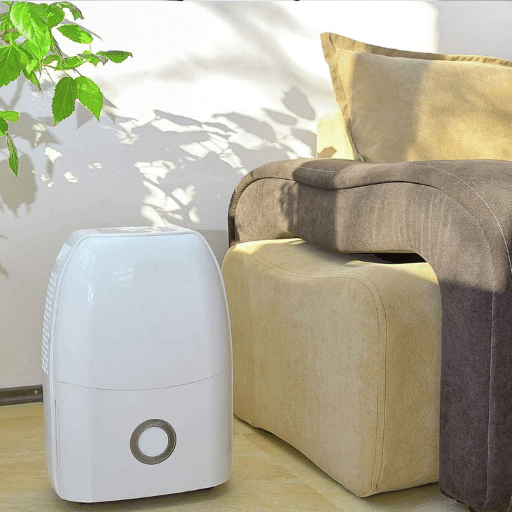
Different scientific factors have a big role in how people perceive humidity and heat and consequently regulate their bodies in such environmental conditions. Here are five major facts and figures that show the connection very well:
💧 Evaporation’s Role
Evaporation of sweat from the skin is the body’s primary cooling process, and high levels of humidity slow this process down considerably. Hence, the body perceives the air warmer than it is.
🌡️ Heat Index
Heat index is a combination of air temperature and relative humidity that gives how hot it feels to the human body. For instance, a day of 85°F (29°C) with 80% humidity can feel like 100°F (38°C) or even more.
⚡ Stress in Thermoregulation
The body’s thermoregulation processes undergo a very high level of stress due to prolonged exposure to hot and humid conditions, thus increasing the chance of heat-induced disorders like heat exhaustion or heat stroke.
🧠 Psychological Effect
Research reveals that the humidity factor can extensively raise the perception of discomfort and tiredness even at fairly mild temperatures thereby impacting mood and productivity.
💦 Dew Point Scale
Another important factor is the dew point which indicates the temperature at which air will become moisture-laden. A dew point over 60°F (16°C) usually feels sticky whereas a dew point over 70°F (21°C) is unbearable.
🎓 Key Learning: Mastering these scientific concepts helps people develop better methods for controlling indoor and outdoor environments during hot and humid weather.
How Humidity Affects Comfort Levels
Humidity is one of the main environmental factors that affect the comfort of people in different ways. Listed below are five important ways that humidity causes changes in comfort levels and are also backed up with details and data:
The Relationship Between Humidity and Temperature
The combination of humidity and temperature is a major factor affecting human comfort and the ecosystem. The following are five main points that illustrate their connection:
📊 Heat Index
The heat index quantifies the perceived temperature that results from the mix of relative humidity with the air temperature. To illustrate, an 85°F day with 70% humidity can feel like 95°F, which raises the risk of heat-related diseases.
💨 Evaporation Rates
High temperatures coupled with low humidity rates cause evaporation to happen rapidly, thus helping the body efficiently cool off through sweat evaporation. On the other hand, high humidity hinders evaporation resulting in discomfort and overheated bodies.
🌫️ Fog Formation
Fog formation is more likely to occur during cool days when there is high humidity and low temperature. The drop in temperature and the air reaching its dew point are the processes that lead to the condensation of water vapor and thus to the presence of fog.
🏠 Thermal Comfort
Humans prefer being in certain ranges of humidity and temperature. Most people consider an indoor environment to be ideal if the temperature is within the range of 68–72°F and the relative humidity is between 40–60%.
🌾 Agricultural Impacts
The temperature and humidity factor has an immediate impact on agricultural output. For example, the combination of high humidity and high temperatures can be detrimental to the crops’ growth, whereas low humidity along with high heat can lead to a quick loss of soil moisture.
💡 Important Note: These points make it clear how necessary the balance between temperature and humidity is for the good of health and nature.
Psychrometrics: Understanding Air Properties
🔬 The Science of Air Properties
Psychrometrics is a branch of science that focuses on the properties of air and their correspondence to moisture, which is an inevitable aspect of the major branches like HVAC, meteorology, and environmental science. The following are the five essential properties in psychrometrics:
Dry-Bulb Temperature (DBT)
This is the temperature of the air as determined by a regular thermometer that is placed in the air. This is the primary measurement which is used to find other psychrometric properties.
Wet-Bulb Temperature (WBT)
This is the vapor cooled to the lowest temperature by the evaporation process air can reach. A thermometer enveloped by a water-saturated cloth is used for the measurement, which is a vital factor in humidity study.
Humidity Ratio (HR)
Commonly called moisture content, this refers to the quantity of water vapor in one unit of dry air, usually expressed in grams per kilogram (g/kg).
Relative Humidity (RH)
It is signified as a percentage, showing the level of moisture in the air compared to the maximum moisture the air can hold at a particular temperature.
Dew Point Temperature (DPT)
The point where the water vapor concludes to form liquid is termed the Dew Point Temperature. It is the most important element even when it comes to the development of weather patterns and climate control.
🎯 Conclusion: Being cognizant of such properties enables accurate examination and successful regulation of the aforementioned applications, of which maintaining right air and moisture levels is a prerequisite.
Dehumidifiers vs. Air Conditioners

Comparison of Functionality
When it comes to the functional differences among the dehumidifiers and air conditioners of the same functional group, the air processing methods and purposes of the devices need to be analyzed first.
🌬️ Air Management and Humidity Control
Dehumidifiers:
Removing superfluous water vapor from the atmosphere is what dehumidifiers are meant for. They cool the air down with the help of cooling coils, causing the water vapor to change its state from gas to liquid. The water, which may then be collected or drained off, has been removed from the air in this manner.
📊 Performance Data: Based on up-to-date information, the daily capacity of an average dehumidifier to absorb water ranges from 10 to 50 pints, based on its size and the level of humidity in that specific area. Thus they can be used successfully in such places as basements and bathrooms where the presence of mold, mildew, and allergens is mainly caused by the moisture in the air.
Air Conditioners:
The elimination of humidity along with cooling is done by air conditioners but the primary aspect remains temperature control, that is cooling air to a specified level. The procedure involves the room being heated during cooling through the refrigerant circulation and the heat being expelled to the outside.
⚡ Efficiency Data: Recently, energy-efficient inverter models, especially have the capability to cool a typical room (about 150-250 square feet) by as much as 20°F in a matter of minutes without burning much energy.
✅ Final Analysis: Through an examination of the features, it is easy to see that every device has its own field of application – to some degree, both of them, however, will cooperate in reducing humidity. A dehumidifier would be the most suitable for people who plan to control humidity and eliminate moisture-related problems, while an air conditioning unit will be a more appropriate option for temperature control and people looking to cool.
Cost-Effectiveness and Energy Efficiency
Dehumidifier and air conditioner comparison implies evaluation of their cost-effectiveness and energy efficiency to pick up the one that meets the requirements the best. Here is a list of the main aspects that point out the factors for both devices to think about:
💰 Initial Purchase Price
- Dehumidifiers: Less expensive, with initial costs going from $50 to $300 depending on the dimensions and capability.
- Air Conditioners: Significantly higher, starting from $200 and going up to $1000 or even more if it is a high-tech model.
⚡ Energy Consumption
- Dehumidifiers: Kept at a low-energy cost as they mostly do the moisture removal with no major cooling and so the average energy consumption comes to 300 to 700 watts.
- Air Conditioners: Usually more power hungry, and their average wattage consumption is between 900 and 2000 watts depending on units’ power and efficiency rating.
💵 Operational Costs
- Dehumidifiers: Generally require lower operational costs due to their non-demanding nature.
- Air Conditioners: Might be one of the most electricity-consuming home appliances if prolonged use is necessary in the case of hot climates.
🔧 Lifespan and Maintenance
- Dehumidifiers: Normally last for 5 to 10 years with very little maintenance involved, such as filter cleaning and water tank emptying.
- Air Conditioners: Although tough, may need more frequent customer service and repairs increasing the total cost of ownership in the long run.
📅 Seasonal Versatility
- Dehumidifiers: Effective every day of the year, especially in wet or humid areas.
- Air Conditioners: Only usable when it is hot, so they are not very useful in winter times.
📌 Takeaway: By looking at these factors the consumers can decide which option fits in the best way with their budget, energy efficiency needs and also the purpose of buying it.
When to Use a Dehumidifier Over an Air Conditioner
An air conditioning unit can be replaced with a dehumidifier in an environment or situation that turns out to be the better option for you. The following is a list of 5 such detailed cases where the operation of a dehumidifier is not only more effective but also more beneficial:
💧 Managing High Humidity Levels
A dehumidifier is the best solution for places where the humidity level is over 50%, because it vaporizes the air and reduces the amount of water vapor to the point of being non-problematic for humans. This is a basic requirement in the fight against mold and the effort to have cleaner air in the house.
🛡️ Preventing Mold and Mildew
Dehumidifiers are helpful in wet rooms like basements, bathrooms, or crawl spaces. The control of moisture through dehumidification helps in the elimination of mold and mildew, which not only results in the prevention of the damaging effects on the structures but also in the reduction of the health risks associated with them.
Improving Respiratory Health
High humidity levels can aggravate asthma and allergy sufferers by providing good breeding grounds for mold, dust mites, and mildew. A dehumidifier works to eliminate these triggers and keeps the indoor environment at a healthy humidity level (30-50%).
Lowering Energy Consumption
The power consumption of a dehumidifier is usually lower compared to that of an air conditioner. If the requirement is moisture control only and not cooling, a dehumidifier is the cheaper and more efficient option.
Protecting Household Items and Structures
Water vapor in high quantity can ruin wooden pieces of furniture, walls, floors, and also make the electronics invite trouble. With the help of a dehumidifier, a household is able to preserve its precious items by controlling the humidity levels.
Once you understand these situations clearly, you will be able to decide when a dehumidifier is the right one to choose over an air conditioner for a healthier and more efficient living.
Tips for Choosing the Right Dehumidifier
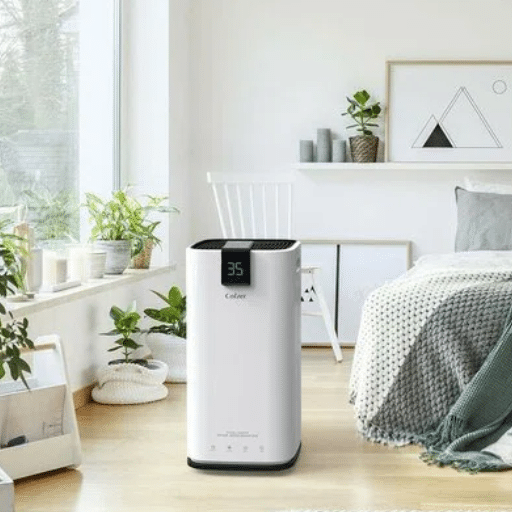
In choosing the ideal dehumidifier for your situation, you must take into account a few key factors to secure maximum performance and satisfaction. The following five tips are essential for making your decision:
Room Size and Coverage Area
First, the primary consideration is the size of the room where the dehumidifier is to be used. The capability of dehumidifiers is rated in square feet areas they can cover. For instance, if you buy a 500 sq. ft. unit, it will not properly work in an area bigger than that.
Humidity Level and Capacity
Get to know the levels of moisture in your room. Dehumidifiers are classified according to the maximum amount of water they can extract per day, which is expressed in pints. Like, for moderate humid conditions a 30-pint dehumidifier would do good, but for wet places a 50-pint or 70-pint unit may be necessary.
Energy Efficiency
Make it a point to select the dehumidifier with the Energy Star rating because this will make sure that the unit is consuming less energy and your bills are still lower while you get to enjoy great performance. The energy-efficient units will save you money through their long lifespan.
Drainage Options
Think about what kind of water-removal method you are going to use. The next type of model that you have choice over is one that offers continuous drainage, such as through a hose connection, which is the more convenient option; then comes the one that has a removable water tank which requires the user to empty it manually.
Noise Levels
Make your selection based on the noise level that you deem fit for the location it is intended. When it is about bedrooms or drawing rooms, then a quieter dehumidifier is recommended, the one that has a noise level of 50 decibels or less. Consult the product specifications for sound output before you buy.
In-depth analysis of these factors will guarantee a dehumidifier that is tailor-made for your specific requirements and at the same time, it will be the primary contributor to the creation of an environment that is both comfortable and healthy by means of moisture control.
Factors to Consider: Size and Capacity
In the process of choosing a dehumidifier, size and capacity are very important points that determine how capable the machine will be in moisture management in the designated area. The term capacity associated with the unit indicates the amount of water it can remove from the atmosphere within a period of twenty-four hours and pints are the most commonly used unit of measurement. Below are some important things to think about based on the current standards:
Size of the Room and Humidity
To get the best performance out of the dehumidifier, always try to pair the machine’s capacity with the room size and the extent of the humidity problem. The accompanying guidelines, which are derived from scientific inquiry and expert opinions, can be of great help:
Small Rooms (up to 300 square feet)
A dehumidifier that can remove 20-30 pints per day is appropriate for smaller areas, like bathrooms or laundry rooms, with a little or moderate humidity problem.
Medium Rooms (300-500 square feet)
Units with the power of 30-50 pints capable of medium-sized places such as bedrooms or small basements will be able to handle efficiently the water vapour coming in from outside reducing it to the normal level thereby maintaining a comfortable atmosphere inside.
Large Rooms (500-1,000 square feet)
For a living room or a combined area of the house with good airflow and where the family spends most of their time, the right choice of a dehumidifier would be one with a capacity of 50-70 pints. Areas with a lot of moisture may require a unit with even greater capacity.
Climate Factors
The humidity levels are different in different places, and they also change with the seasons. In humid areas, like places with frequent rain or high heat, even small rooms might need a dehumidifier with a great capacity. The same goes for cold but wet regions, where a unit with frost control features would be the best choice.
Energy Convenience
Dehumidifiers with large capacity are often more efficient regarding energy consumption since they can extract more moisture in less time. Do not forget to check if the machine has an Energy Star certification as it indicates that the dehumidifier is power-efficient and will not add much to your electricity bills.
Water Tank Volume or Drainage Options
Look for the size of the tank in the dehumidifier. The unit with a small water tank will need to be emptied frequently, while the one with a big tank will be able to run for a more extended period before the tank needs to be emptied. Another option would be to go for a model that has uninterrupted drainage so that there is no need for manual emptying of the tank.
Once you have weighed your space and climate requirements against these metrics, you will be able to pick a dehumidifier that suits your room size, moisture problems, and energy efficiency aspirations. A correctly sized unit not only guarantees good performance but also contributes to the creation of a pleasant living environment.
Features to Look For in a Dehumidifier
Adjustable Humidity Settings
A dehumidifier with customizable humidity settings, which are usually expressed in percentages, will give you very fine control over the levels of moisture inside your home. Most of the models allow for adjusting the levels of humidity from 30% to 90%, depending on your exact requirements.
Auto-Shutoff and Full Tank Indicator
A good dehumidifier should definitely have an auto-shutoff mechanism that cuts off the machine when the water container is full, hence stopping the overflow. A light or an alert for a full tank is also a pretty good feature, so you will always know when the time for emptying the reservoir comes.
Energy Efficiency and Certifications
It is necessary to use energy wisely in the first place to accrue savings in the long run. The units that have the Energy Star certification which represents the case of effective dehumidification and energy consumption being in the same balance, are the ones to be considered. The energy-saving models will be able to lower the running costs as a result of a long period.
Noise Level Control
If you are going to have a dehumidifier running in bedrooms, offices, or public spaces, it would be wise to go for the ones with low decibel ratings that are designed for silent operation. Machines that have “sleep” or “low-noise” modes are especially helpful in keeping the environment undistracted.
Filter Maintenance and Air Purification
A lot of the newest dehumidifiers on the market today come with filters that are washable and reusable, and they catch dust and allergens while the device is working. Some of the models go a step further and have the indoor air quality improved while moisture is being removed with the help of activated carbon filters that are part of the air purification process.
Maintenance and Care for Optimal Performance
If you want your dehumidifier to be efficient and last long, proper maintenance is a must. Keeping your dehumidifier in top condition can be achieved using these five steps:
Water Tank Should Be Cleaned Regularly
To prevent the growth of bacteria and mold, once a week, empty and clean the water tank thoroughly. Effective cleaning can be done by using mild soap and warm water.
Filters Should Be Inspected and Cleaned
As stated by the manufacturer, generally every one to three months, wash or replace the filters. One of the main reasons for dirty filters is that they keep the area where the air is purified and dehumidified at a minimum.
Coils Should Be Checked and Cleaned
The Dust and dirt that come with time can also affect the efficiency of the dehumidifier because they can build up on its coils. Coils should be cleaned periodically with soft brush or use of a vacuum cleaner, allowing continued smooth operation.
Placement Should Be Done Properly
A dehumidifier should be placed in an area with good ventilation, and that air intake as well as the exhaust are not blocked. This will lead to better air flow and the unit will become more efficient.
Periodic Inspections Should Be Done
Every now and then, check for wear and tear or damage, such as leak, noise that is not common, or performance that is below expected. If the problem is solved quickly, it can make the damage less and the repair process less costly.
References
- HVAC Dehumidification Systems for Thermal Comfort: A Critical Review
This review discusses the role of dehumidification in thermal comfort and its interaction with cooling systems.
Link to source - Next-Generation HVAC: Prospects for Dehumidification and Cooling
This paper explores advanced dehumidification and cooling technologies, including desiccant and membrane-based systems.
Link to source - Desiccant Cooling Air Conditioning: A Review
This study reviews desiccant cooling systems and their integration with other cooling technologies.
Link to source
Frequently Asked Questions (FAQ)
Does a dehumidifier cool a room?
A dehumidifier does not actually cool a room in the same way that an air conditioning unit does. Instead, it helps to remove excess moisture from the air, which can make the room feel cooler and more comfortable, especially in high humidity conditions.
How does a dehumidifier make a room feel cooler?
By lowering the humidity level in the room, a dehumidifier can help make the air feel cooler. When moisture is removed, the air is less sticky and uncomfortable, allowing the body’s natural cooling mechanisms to work more effectively.
Can a dehumidifier work alongside an air conditioning unit?
Yes, using a dehumidifier in conjunction with an air conditioning unit can enhance comfort. The dehumidifier removes moisture from the air, allowing the AC unit to cool the air more efficiently without adding humidity back into the room.
What type of dehumidifier should I choose to help cool my room?
There are two main types of dehumidifiers: refrigerant and desiccant. A refrigerant dehumidifier uses a compressor to condense moisture and may add a small amount of heat to the air, while a desiccant dehumidifier absorbs moisture without using electricity. Choose based on your specific needs and humidity levels.
How does lowering humidity help cool down a room?
Lowering the humidity level reduces the amount of moisture in the air, which can make the space feel cooler. High humidity can make warm air feel even warmer, so when humidity is reduced, the air feels more comfortable and cooler.
Will a dehumidifier remove moisture from the air effectively?
Yes, a dehumidifier is designed to remove moisture from the air effectively. It draws humid air into the unit, where it condenses moisture on cold coils and then releases drier air back into the room, helping to lower humidity levels.
Can using a dehumidifier help improve air quality?
Yes, by reducing excess moisture in the air, a dehumidifier can help improve air quality. High humidity can lead to mold growth and dust mites, which can negatively affect indoor air quality and overall comfort.
What is the impact of a dehumidifier on the temperature of a room?
While a dehumidifier does not lower the temperature directly, it can create a more comfortable environment by reducing humidity. This can make the room feel cooler, as drier air allows for better evaporation of sweat from the skin.
How long does it take for a dehumidifier to make a room feel cooler?
The time it takes for a dehumidifier to make a room feel cooler varies depending on the initial humidity level and the size of the unit. Typically, you may notice a difference within a few hours of operation, especially in areas with high humidity.

